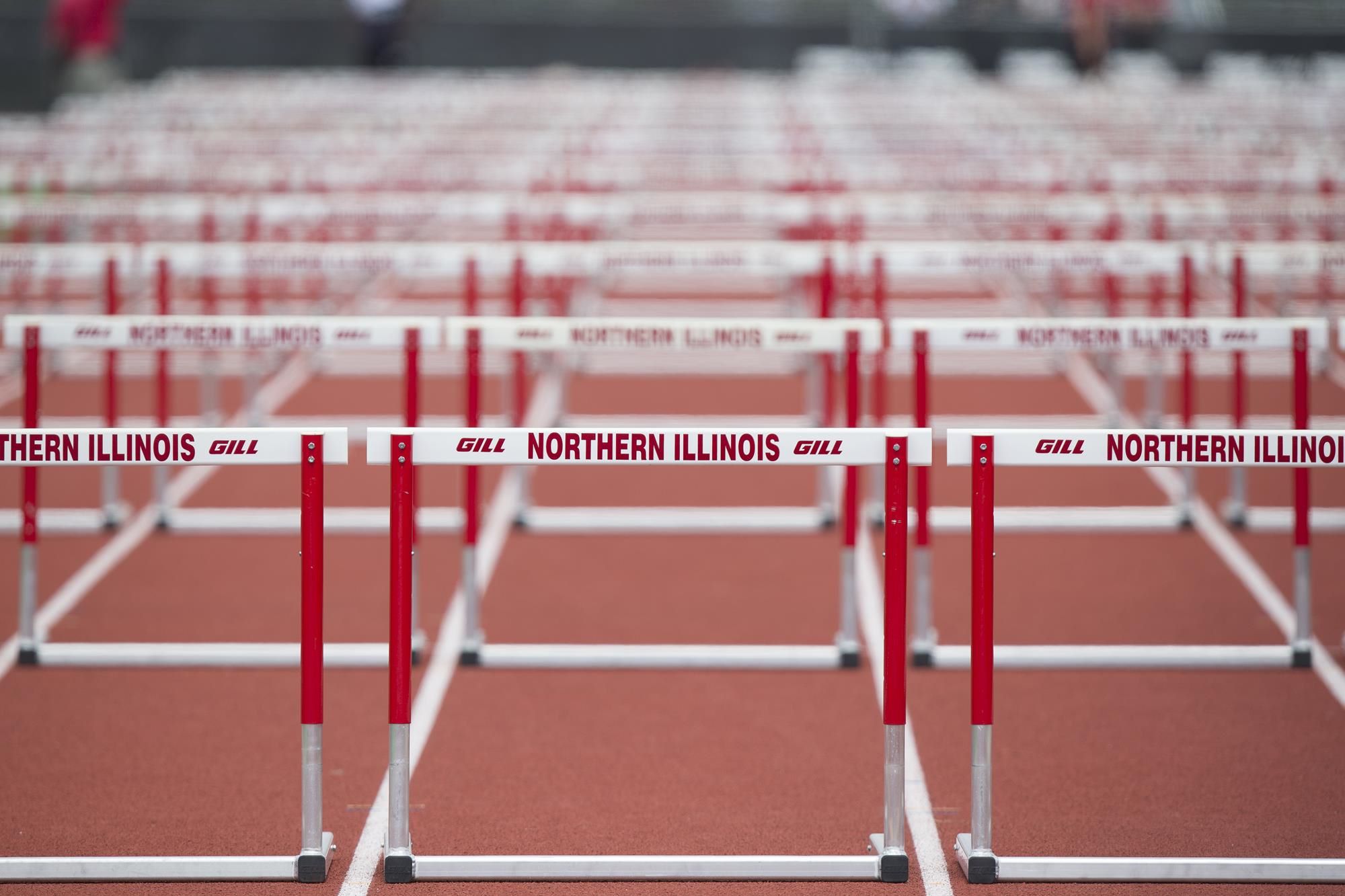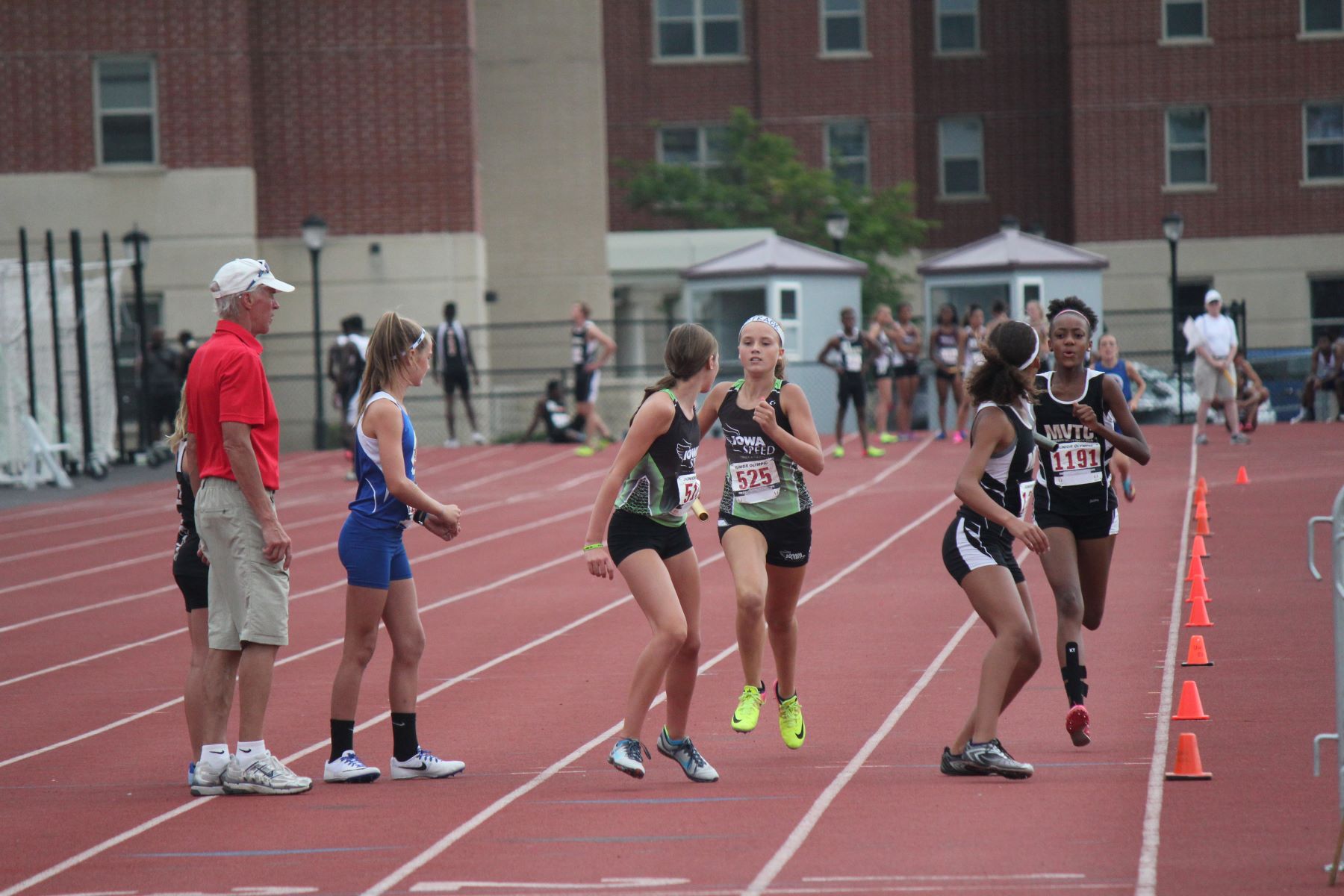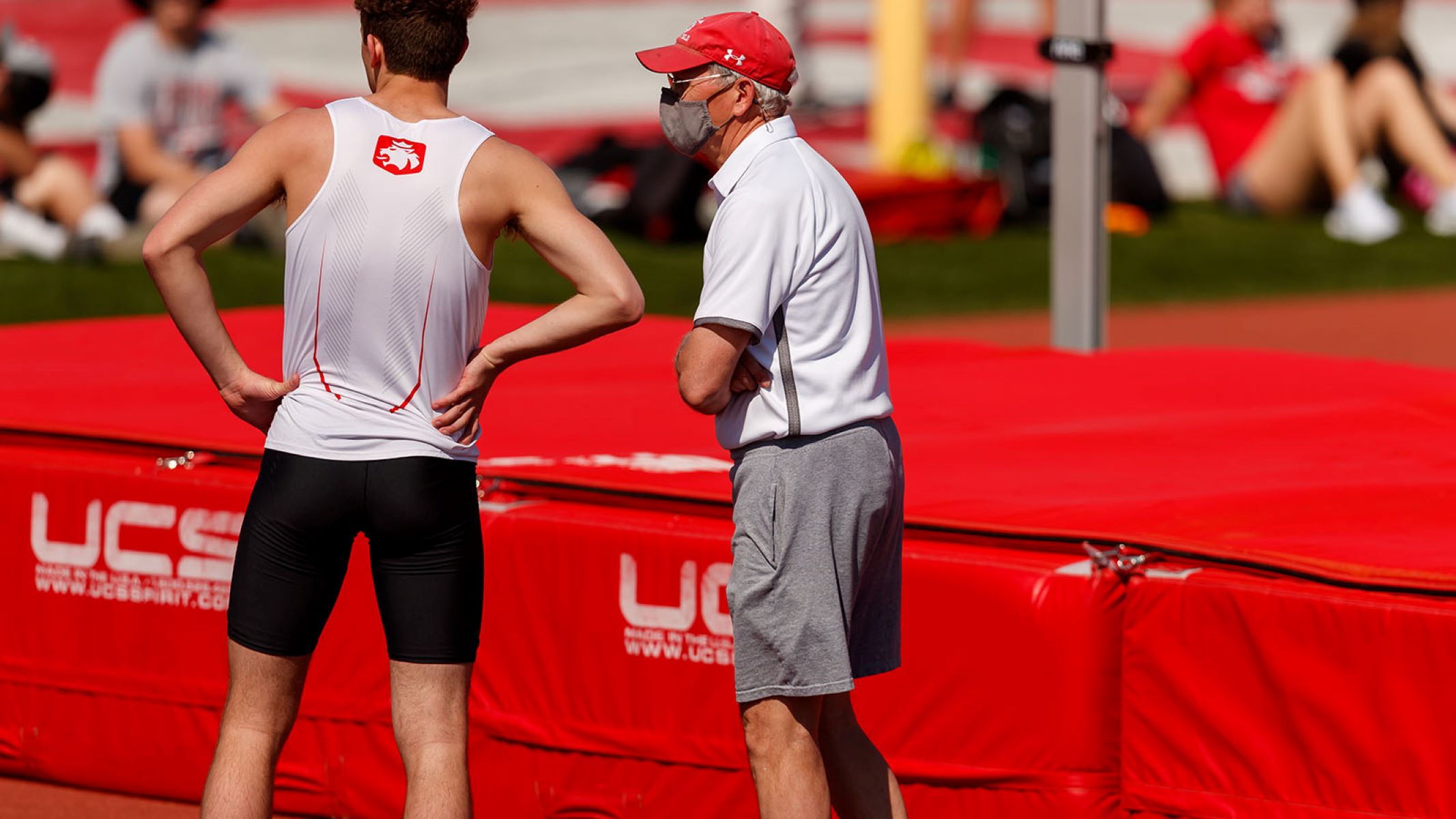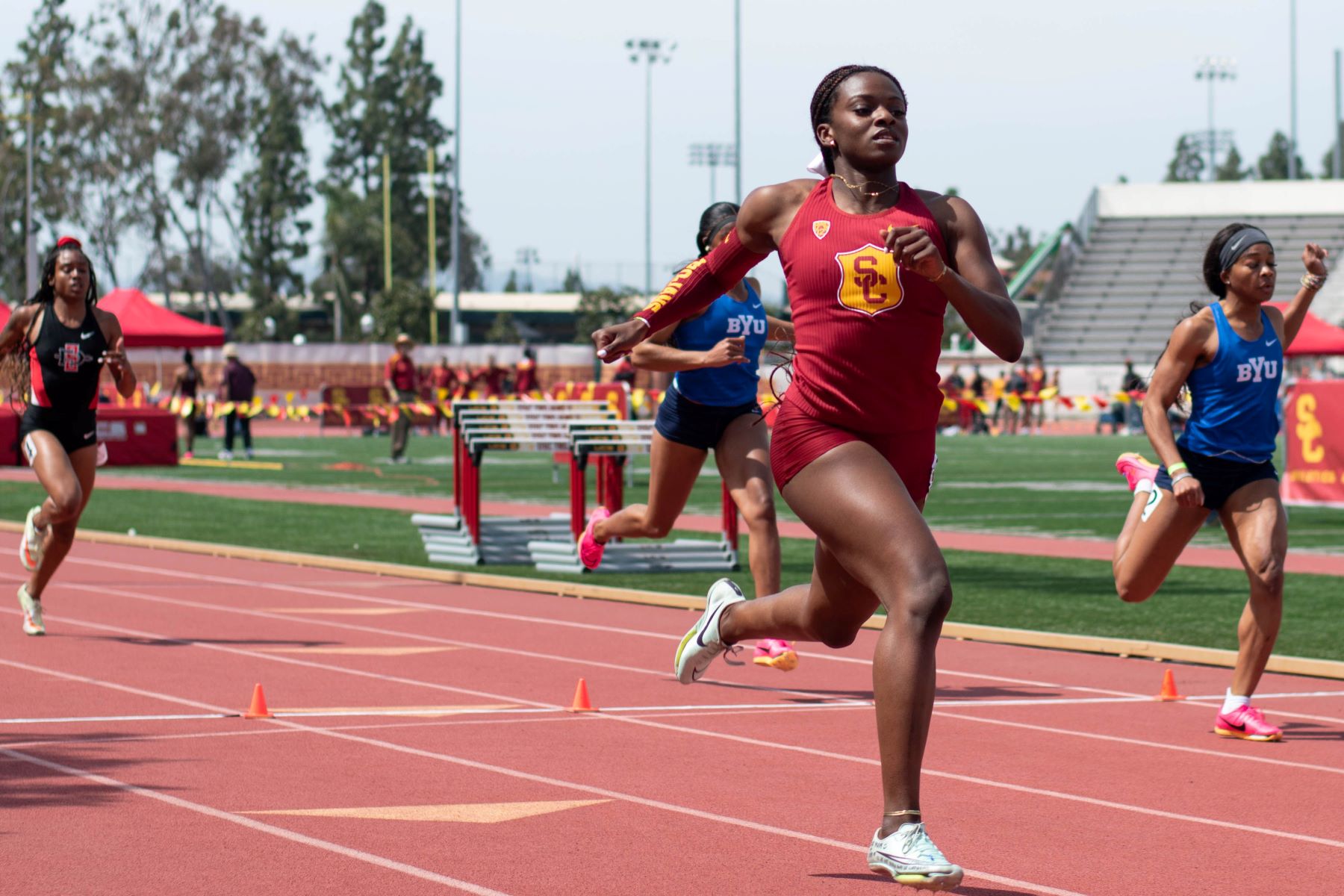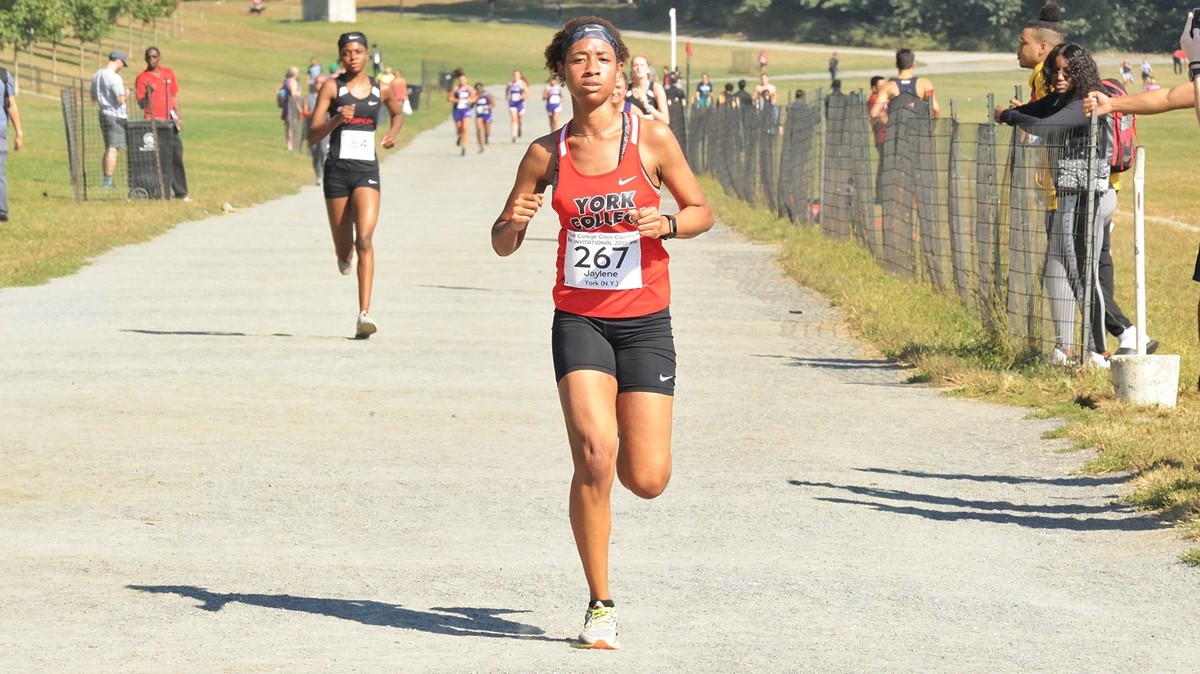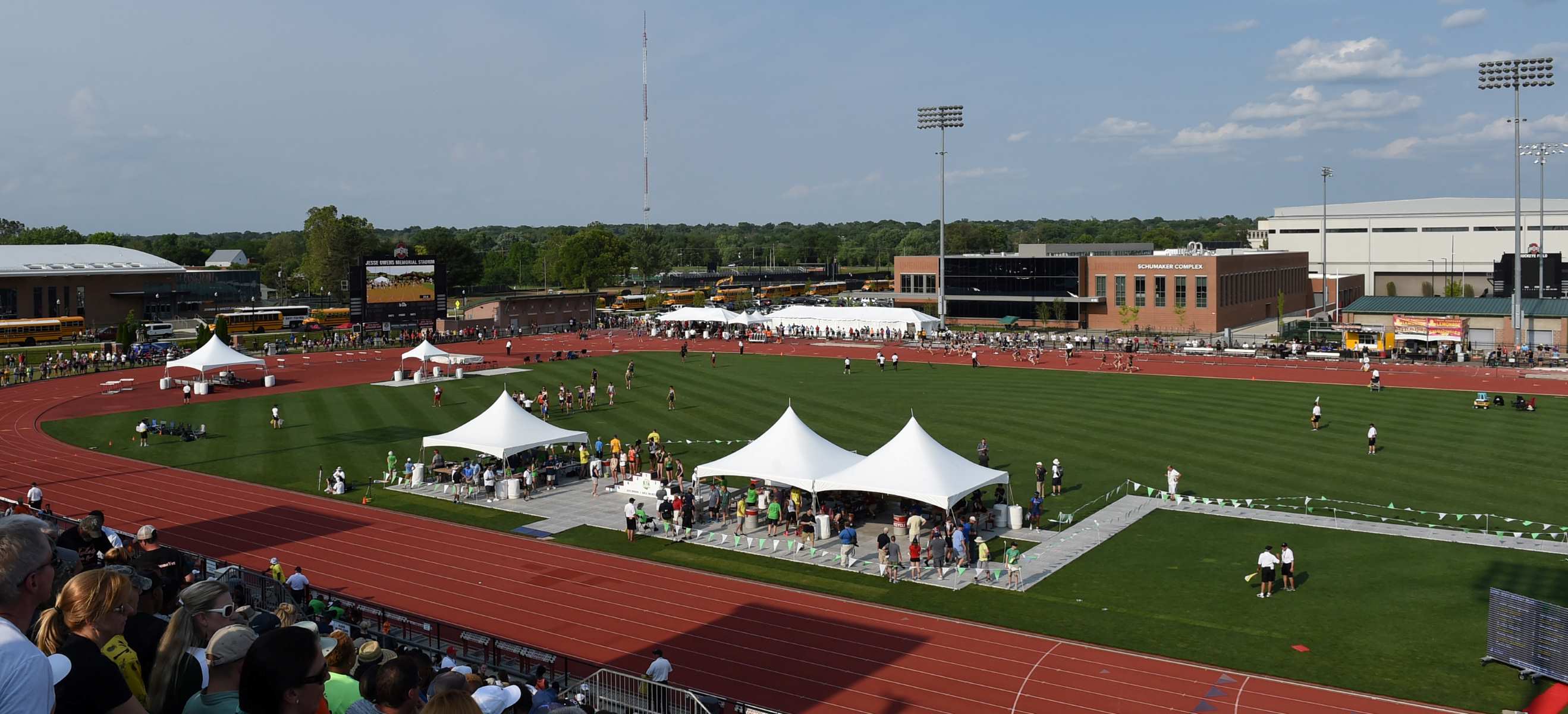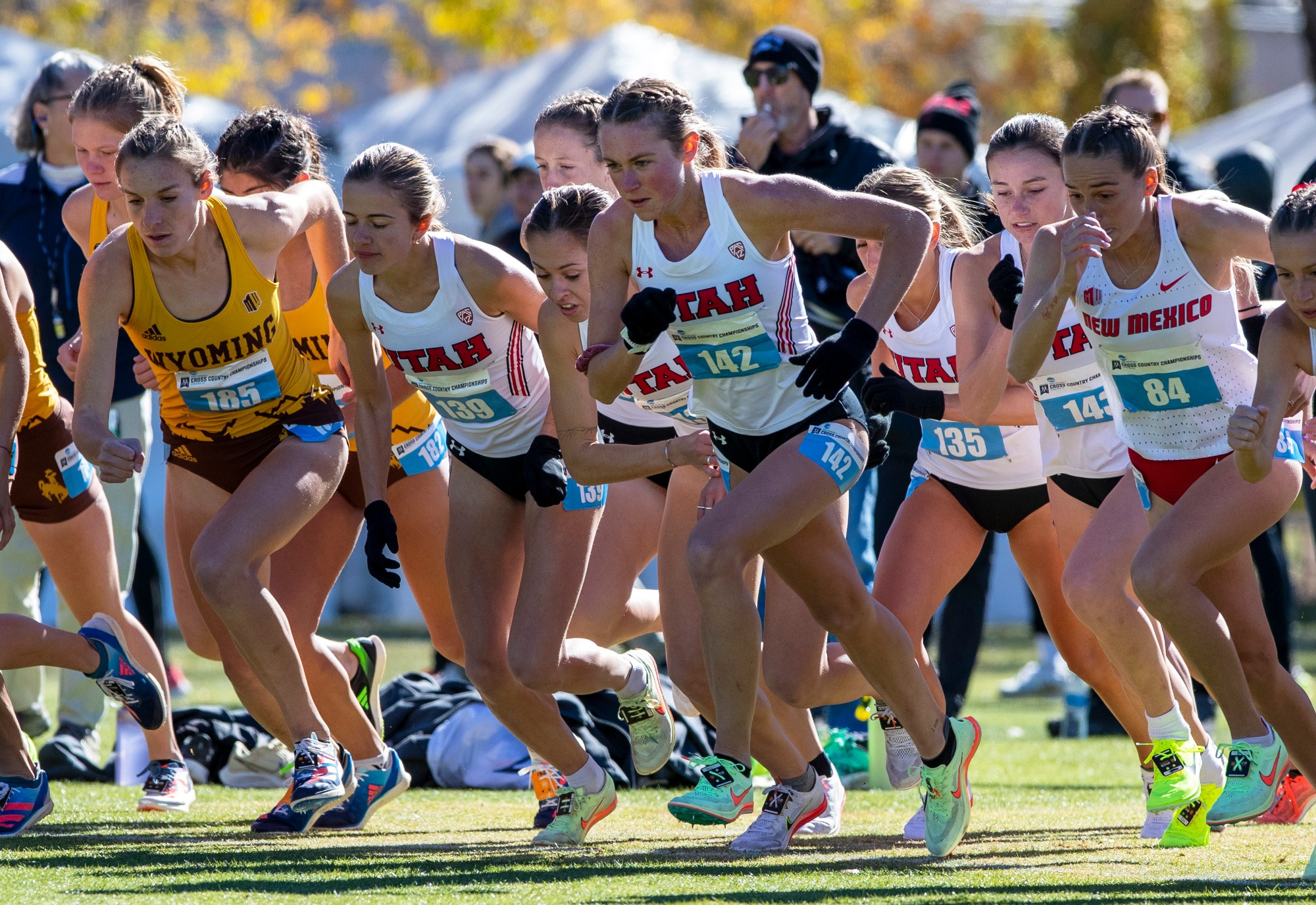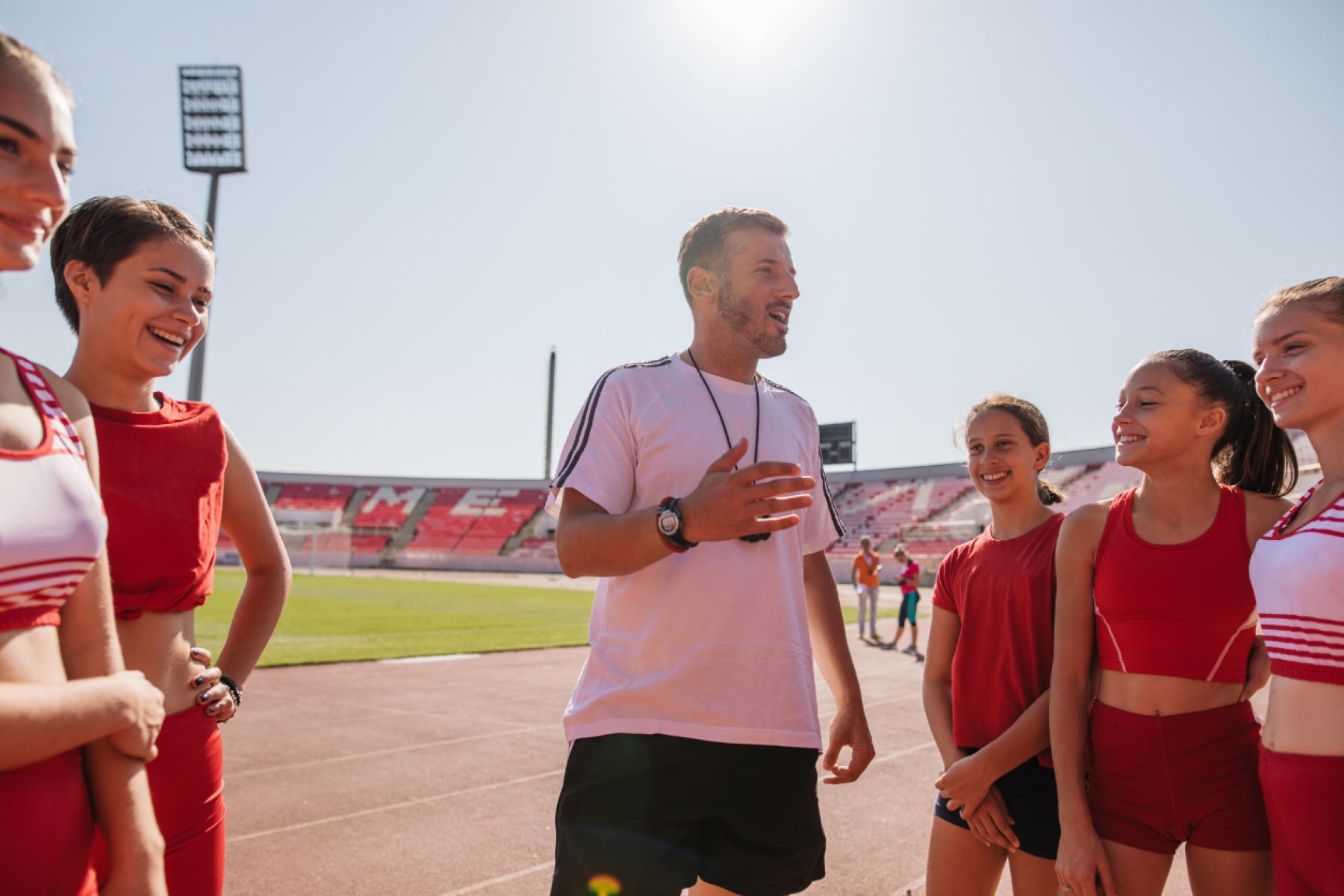

Featured
How To Get Recruited For Track And Field
Modified: January 22, 2024
Get featured in track and field recruitment by learning how to excel in the sport. Discover insider tips and strategies to enhance your chances of getting noticed and recruited.
Introduction
If you are passionate about track and field and dream of competing at the collegiate level, you may be wondering how to get recruited. The world of college athletic recruiting can be complex and overwhelming, but with the right approach and guidance, you can navigate through the process successfully.
Track and field is a sport that combines athleticism, endurance, and skill. From sprinting to long-distance running, from jumping to throwing, there are a wide variety of events to choose from. College coaches are always on the lookout for talented athletes who can contribute to their teams and help them achieve success.
In this article, we will break down the steps you need to take to increase your chances of getting recruited for track and field. From understanding the recruiting process to building relationships with coaches, we will cover all aspects of the journey.
Keep in mind that the recruiting process can vary depending on the division level of the college you are targeting. Division I, II, and III programs have different recruitment rules and eligibility requirements. It is important to familiarize yourself with these differences and tailor your approach accordingly.
So, if you’re ready to take the first step towards becoming a recruited track and field athlete, let’s dive in and explore the key strategies to maximize your chances of success.
Step 1: Understand the recruiting process
Before diving into the track and field recruiting process, it is essential to have a clear understanding of how it works. Familiarize yourself with the guidelines and regulations set by the NCAA or relevant governing body for your particular division level.
The recruiting process typically starts during your sophomore or junior year of high school, although it can vary depending on the division level and specific recruiting timeline. Coaches may reach out to you directly or through your high school coach, but it’s crucial to take an active role in the process.
Research and create a list of the colleges or universities you are interested in. Consider factors such as the track and field program’s reputation, facilities, location, and academic offerings. This will help you narrow down your options and focus your efforts on schools that align with your goals and preferences.
It’s important to keep in mind that colleges also evaluate your character and academic performance, in addition to your athletic abilities. Maintaining a strong GPA and taking challenging courses can make you a more attractive recruit. Understand the minimum academic requirements set forth by the NCAA or relevant governing body.
Reach out to college coaches and express your interest in their track and field program. Start by sending introductory emails along with your athletic resume and highlight video. Attend track meets and competitions where college coaches may be present. Make an effort to network and introduce yourself to coaches. Build relationships and demonstrate your dedication and passion for the sport.
Remember to stay organized throughout the process. Keep track of the schools you have contacted, the responses you have received, and any recruiting events or visits you have scheduled. This will help you stay on top of things and ensure that you don’t miss any opportunities.
Understanding the recruiting process is the first important step to becoming a recruited track and field athlete. By familiarizing yourself with the guidelines, researching schools, and actively reaching out to coaches, you can set yourself up for success and increase your chances of finding the perfect fit for your collegiate track and field career.
Step 2: Set goals and determine your event
Setting clear goals in track and field is essential for your development as an athlete and for attracting the attention of college coaches. Take the time to evaluate your strengths and determine which events you excel in or have the potential to excel in.
Consider factors such as your physical attributes, natural abilities, and personal preferences when deciding which event(s) to focus on. Are you more inclined towards sprinting, long-distance running, jumping, or throwing? Assess your technique, speed, agility, and strength to identify your strongest event.
Once you have identified your event, set specific and measurable goals that you aim to achieve. These goals should be challenging yet realistic. For example, you may set a goal to improve your 100-meter sprint time by 0.5 seconds within the next six months or to increase your long jump distance by one foot by the end of the season.
Setting goals not only helps you stay focused and motivated, but it also provides a clear roadmap for your training and competition schedule. Coaches are impressed by athletes who have a clear vision of what they want to accomplish and are actively working towards those goals.
In addition to setting individual goals, it’s important to also consider your team goals. Track and field is a unique sport that combines individual performance with team success. Coaches value athletes who understand the importance of contributing to the overall success of the team.
Furthermore, setting goals can help you determine which level of college track and field programs to target. If you have set ambitious goals and are performing at a high level, you may aim for Division I programs. On the other hand, if you prefer a more balanced approach between academics and athletics, Division III programs may be a better fit.
Remember that your goals can evolve and change as you progress in your track and field journey. As you gain more experience, receive coaching, and continue to improve, you may discover new strengths or develop a passion for a different event. Stay open to exploring different possibilities and be willing to adapt your goals accordingly.
By setting goals and determining your event, you are establishing a strong foundation for your track and field career. Having clarity about your strengths and aspirations will not only guide your training and competition choices but also help you stand out to college coaches as a determined and focused athlete with a clear direction.
Step 3: Develop your athletic abilities
Developing your athletic abilities is crucial to becoming a successful track and field athlete and catching the attention of college coaches. Your physical fitness, technique, and performance can greatly impact your chances of getting recruited.
First and foremost, prioritize your physical fitness. Engage in a well-rounded training program that includes strength training, cardiovascular exercises, and flexibility training. Work with a knowledgeable coach or trainer who can tailor your workouts to meet the specific demands of your event.
Strength training is essential for improving power, speed, and overall performance. Focus on exercises that target the muscle groups relevant to your event. Incorporate exercises such as squats, lunges, deadlifts, and plyometric drills to enhance explosive power and improve your start, acceleration, and overall speed.
Cardiovascular exercises are important for building endurance, which is crucial for events such as long-distance running or multi-events. Incorporate running intervals, tempo runs, and cross-training activities like cycling or swimming to improve your cardiovascular fitness.
Flexibility training is often overlooked but plays a significant role in injury prevention and overall performance. Implement a stretching routine before and after workouts to improve your range of motion and maintain flexibility in crucial muscle groups.
In addition to physical fitness, focus on honing your technique in your chosen event. Work with experienced coaches or join a track club to receive proper instruction and guidance. They can provide feedback and help you make necessary adjustments to your form and technique.
Regularly participate in competitions and track meets to gain experience and assess your performance. Pay close attention to your strengths and areas for improvement. Analyze video footage of your races or jumps to identify any technical flaws that need to be addressed.
Furthermore, mental strength and focus are vital components of athletic development. Train your mind to stay focused, remain calm under pressure, and visualize success. Practice techniques such as positive self-talk, goal setting, and imagery to enhance your mental game.
Lastly, don’t forget the importance of rest and recovery. Intense training can take a toll on your body, increasing the risk of injury. Allow yourself adequate rest days and prioritize sleep to ensure proper recovery and optimize your performance.
By diligently developing your athletic abilities, you will enhance your performance and increase your chances of catching the attention of college coaches. Remember, consistent and focused training, along with a commitment to improving both physically and mentally, is key to taking your track and field skills to the next level.
Step 4: Maintain a strong academic record
While athletic abilities are a crucial aspect of the track and field recruiting process, maintaining a strong academic record is equally important. College coaches not only consider an athlete’s performance on the field but also their ability to succeed in the classroom.
Admissions departments and coaches pay close attention to an athlete’s GPA, class rank, and standardized test scores. A strong academic record demonstrates your commitment to excellence and your ability to balance the demands of athletics and academics.
Make sure to take challenging courses and strive for academic success. Stay organized, manage your time effectively, and prioritize your studies. Develop good study habits and seek help when needed. Utilize resources such as tutors, study groups, or online learning tools.
In addition to your GPA, your course selection is also important. Take rigorous courses that align with your academic interests and demonstrate your ability to handle challenging coursework. This can include honors or advanced placement (AP) classes.
Communicate with your teachers and counselors to ensure they are aware of your goals as a student-athlete. They can provide guidance, support, and recommendations that can strengthen your college application.
It’s worth noting that maintaining eligibility to compete at the collegiate level requires meeting minimum academic requirements set by the NCAA or relevant governing body. Familiarize yourself with these requirements early on to ensure you are on track to meet them.
Good academic performance not only makes you a more attractive recruit but also opens up a wider range of opportunities. Having a strong academic record can make you eligible for academic scholarships and grants, which can alleviate the financial burden of college education.
Remember, being a successful student-athlete requires discipline, time management, and a commitment to both your athletic and academic pursuits. By maintaining a strong academic record, you demonstrate your ability to excel both on and off the track, enhancing your chances of getting recruited for track and field at the collegiate level.
Step 5: Create an impressive athletic resume
An athletic resume is a crucial tool in the track and field recruiting process. It provides college coaches with a snapshot of your athletic achievements, skills, and potential. Creating an impressive athletic resume will help you stand out from other recruits and grab the attention of college coaches.
Start by including your contact information at the top of the resume, including your name, phone number, email address, and high school name. This allows coaches to easily reach out to you for further communication.
Next, provide a brief summary or personal statement that highlights your goals, achievements, and what you can bring to a college track and field program. This section should capture the coaches’ attention and make them want to learn more about you.
Include a section that outlines your academic information, such as your GPA, class rank, and standardized test scores. Mention any academic awards, honors, or unique academic achievements you have earned. This shows coaches that you are not only dedicated to your athletic pursuits but also to your academic success.
List your track and field accomplishments, events, and personal bests. Include details about any championships, conference titles, or records you may have set. Don’t forget to mention any awards or recognition you have received for your performance. This section showcases your abilities and highlights your potential as a collegiate athlete.
Highlight your participation in track and field-related activities outside of school, such as club teams, summer leagues, or national competitions. Mention any notable performances or achievements in these settings. If you have attended track and field camps or clinics, include them as well.
Include any additional relevant information, such as leadership roles within your track and field team, community service activities, or other extracurricular involvement. Coaches look for well-rounded athletes who contribute positively both on and off the field.
Finally, include references or recommendations from coaches, trainers, or mentors who can vouch for your character, work ethic, and skills. This adds credibility to your resume and provides coaches with valuable insights about your abilities and potential as a student-athlete.
Keep your athletic resume concise and organized, using bullet points to clearly present information. Use strong action verbs and descriptive language to make your accomplishments stand out. Format the resume in a professional and visually appealing way.
An impressive athletic resume can make a significant impact on college coaches’ perception of you as a prospective student-athlete. It showcases your achievements, potential, and commitment to the sport, increasing your chances of getting recruited for track and field at the collegiate level.
Step 6: Seek exposure through competitions and showcases
Seeking exposure through competitions and showcases is a vital step in getting recruited for track and field. College coaches rely on these events to identify and evaluate potential recruits. By participating in high-level competitions and showcases, you increase your chances of catching the attention of college coaches and showcasing your skills.
Start by researching and targeting competitions that are well-regarded in the track and field community. Look for events that attract college coaches from various programs and divisions. These competitions often provide opportunities to compete against top-level athletes, giving you a chance to demonstrate your abilities in a competitive setting.
Consider participating in regional, state, or national-level meets to increase your exposure. These events are typically well-attended by college coaches who are actively recruiting. Look for opportunities to compete against athletes who have already committed to colleges. These head-to-head matchups can be a great way to prove yourself and draw the attention of coaches.
In addition to regular competitions, seek out showcases and camps specifically designed to connect athletes with college coaches. These events often include educational seminars, performance evaluations, and networking opportunities. They allow you to receive direct feedback from coaches and gain valuable insights into what they are looking for in recruits.
When participating in competitions and showcases, make sure to perform at your best. Coaches are not only evaluating your abilities but also paying attention to your work ethic, sportsmanship, and ability to handle pressure. Show your dedication to the sport and your willingness to compete at a high level.
Take advantage of the opportunity to network with college coaches and introduce yourself. Be proactive in reaching out to coaches who express interest or attend the events. Follow up with personalized emails expressing your gratitude and reiterating your interest in their track and field program.
Remember that seeking exposure through competitions and showcases is an ongoing process. It requires consistent participation in high-level meets and a proactive approach in building relationships with college coaches. Keep track of your performances, achievements, and interactions with coaches to update them on your progress and demonstrate your continued interest.
Seeking exposure through competitions and showcases is a proactive strategy that increases your visibility and chances of getting recruited for track and field. By consistently participating in high-level events and effectively networking with college coaches, you enhance your opportunities and set yourself apart from other recruits.
Step 7: Build relationships with college coaches
Building relationships with college coaches is a crucial step in the track and field recruiting process. These relationships can give you valuable insights into the programs, showcase your commitment to the sport, and ultimately increase your chances of getting recruited.
Start by researching and identifying the coaches from the colleges you are interested in. Look for their contact information on the school’s athletic website and reach out to them via email or phone. Introduce yourself, express your interest in their track and field program, and provide a brief overview of your accomplishments.
Attend track meets where college coaches may be present and make an effort to introduce yourself. Approach them with confidence, be respectful, and let them know that you are interested in their program. Engage in conversations about their program, their coaching philosophy, and what they look for in recruits.
When communicating with coaches, maintain regular and consistent follow-up. Update them on your recent performances and achievements, as well as any relevant news or accomplishments. This demonstrates your commitment and keeps you on their radar.
Show a genuine interest in the coach’s program and the academic offerings of the institution. Ask questions about their training methods, team dynamics, and the support provided to student-athletes. Coaches appreciate recruits who take the time to get to know their program beyond just the athletic side.
Building relationships with college coaches is not solely about self-promotion. It’s also about showcasing your character, work ethic, and coachability. Be respectful, attentive, and responsive in your communication. Show that you are committed not only to your individual success but also to the success of the team.
Consider attending track and field camps or clinics hosted by the colleges you are interested in. These events provide valuable face-to-face interactions with the coaching staff. It allows them to see you in action and provides a more personal opportunity to build a connection.
When making your college visits, schedule meetings with the track and field coaches. Use this time to ask more specific questions, tour their facilities, and get a sense of the program’s culture. These visits allow you to gauge whether the program is the right fit for you and enable coaches to get to know you better.
Remember that building relationships with college coaches is an ongoing process. Continually nurture these relationships, even after you commit to a school. Keep coaches updated on your progress, successes, and goals. They can serve as mentors and advocates for you throughout your collegiate track and field career.
Building strong relationships with college coaches is a key factor in the track and field recruiting process. By showing genuine interest, staying proactive, and demonstrating your character and abilities, you improve your chances of getting recruited and finding the right fit for your collegiate track and field experience.
Step 8: Attend track and field camps and clinics
Attending track and field camps and clinics is a valuable step in the recruiting process. These events provide opportunities to showcase your skills, receive expert coaching, and gain exposure to college coaches. By participating in these specialized programs, you can improve your technique, gain valuable insights, and make connections in the track and field community.
Research and identify track and field camps and clinics that align with your goals and interests. Look for programs hosted by colleges or organizations known for their track and field success. Consider the specific focus of each camp or clinic, such as sprints, jumps, throws, or multi-events, and choose the ones that are most relevant to your event.
Attending track and field camps and clinics allows you to receive expert coaching from experienced professionals. These coaches can provide valuable feedback and guidance to help you refine your technique, improve your performance, and overcome any weaknesses or challenges you may have.
Additionally, these programs often bring in college coaches as guest instructors or evaluators. This gives you the opportunity to directly interact and showcase your abilities in front of coaches from the colleges you are interested in. It can be a valuable chance to make an impression and capture their attention.
Participating in track and field camps and clinics also exposes you to a wider range of high-level competition. You have the opportunity to compete against athletes with similar skills and aspirations, pushing you to perform at your best. This can be a valuable experience that helps you gauge your abilities and identify areas for improvement.
Not only do these events offer opportunities for skill development and exposure, but they also provide a platform for networking. Interact with the coaches and athletes attending the camps and clinics. Build relationships and connections within the track and field community. These connections can provide support, guidance, and potential future opportunities.
When attending these events, come prepared and ready to learn. Be open to instruction and willing to implement feedback from coaches. Show a strong work ethic and a positive attitude during training sessions and competitions. Coaches and evaluators value athletes who demonstrate a willingness to learn and improve.
Finally, take advantage of the educational seminars and informational sessions that many camps and clinics offer. These sessions can provide valuable insights into various aspects of the sport, such as nutrition, training methodologies, injury prevention, and the college recruiting process.
Attending track and field camps and clinics can be a transformative experience in your athletic journey. It offers opportunities for skill development, exposure to college coaches, and networking within the track and field community. By actively participating in these programs, you enhance your chances of getting recruited and furthering your track and field aspirations.
Step 9: Utilize online recruiting platforms
Utilizing online recruiting platforms can be an effective strategy to expand your reach and increase your visibility in the track and field recruiting process. These platforms provide a centralized hub for athletes, coaches, and recruiting services. By utilizing online recruiting platforms, you can showcase your skills, connect with college coaches, and navigate the recruiting process more efficiently.
Research and identify reputable online recruiting platforms that cater specifically to track and field athletes. These platforms often allow you to create a profile that highlights your athletic achievements, academic information, and personal interests. Make sure to include detailed information about your events, personal bests, and any notable performances or awards.
Upload videos of your performances to showcase your skills to college coaches. Highlight your strengths and demonstrate your technique and form in various events. This gives coaches a visual representation of your abilities and can greatly enhance their understanding of your potential as a track and field athlete.
Some online recruiting platforms also provide tools and resources to aid in the recruiting process. They may offer college search functionality, allowing you to explore different track and field programs that align with your preferences and goals. Additionally, they may provide guidance on contacting college coaches, understanding eligibility requirements, and managing communications throughout the recruitment process.
Utilize the messaging and communication features of these platforms to connect with college coaches. Reach out to coaches directly through the platform, expressing your interest in their programs and providing a brief overview of your accomplishments. Maintain professional and respectful communication at all times.
Another benefit of online recruiting platforms is the ability to access and review information about various track and field programs. Read through coach profiles, team descriptions, and any available testimonials or athlete success stories. This helps you gather insights and make informed decisions about which programs align with your interests and goals.
Continuously update your online recruiting profile with your latest performances, achievements, and academic information. Stay active on the platform by engaging in discussions, participating in forums, and connecting with other athletes and coaches. This demonstrates your commitment and dedication to the sport.
Keep in mind that while online recruiting platforms can be a valuable tool, they should be used in conjunction with other recruiting strategies. Attend competitions, contact coaches directly, and engage in other offline networking opportunities. The key is to combine multiple approaches to maximize your visibility and opportunities.
Utilizing online recruiting platforms can significantly enhance your track and field recruiting journey. By creating a strong online presence, connecting with college coaches, and accessing valuable resources, you increase your chances of getting noticed and finding the right collegiate track and field program to further your athletic and academic aspirations.
Step 10: Take official visits and make your decision
Taking official visits and making your final decision are crucial steps in the track and field recruiting process. Official visits give you the opportunity to experience the college environment, meet the track and field team, and gain a deeper understanding of the program. Making an informed decision ensures that you find the right fit for your athletic and academic goals.
Once you have narrowed down your list of prospective colleges, reach out to the coaches to express your interest in taking an official visit. These visits are typically hosted by the college and provide an opportunity for you to tour the campus, meet with coaches and team members, and experience the day-to-day life of a student-athlete.
During your official visit, take the time to meet with coaches and ask specific questions about their training philosophy, competition schedule, and expectations for student-athletes. Discuss scholarship opportunities or financial aid options if applicable. This is your chance to gather all the information you need to make an informed decision.
Attend a practice session or join the team for a workout to get a sense of their training atmosphere and coaching style. Observe the interaction between athletes and coaches and assess the team dynamics. This will give you a better understanding of the program’s culture and whether it aligns with your own values and goals.
Interact with current team members and ask them about their experience as student-athletes. Inquire about the support given to track and field athletes, academic resources, and the balance between athletics and academics. Their honest feedback can help you gain insights into the realities of being a part of the program.
Explore the campus and the surrounding community to ensure that it is a place where you can thrive both academically and socially. Consider the academic offerings, extracurricular activities, and any other factors that are important to your overall college experience.
Reflect on your visit experiences and gather all the necessary information to make an informed decision. Consider factors such as academics, athletic opportunities, coaching staff, team dynamics, location, and overall fit. Trust your instincts and choose the college that aligns best with your aspirations and values.
Communicate your decision to the coaching staff in a professional and timely manner. Express your gratitude for the opportunity to visit and your excitement to join their track and field program. Be respectful to the other schools you considered and notify them of your decision as well.
Once you have made your decision, continue to work hard and remain committed to your track and field goals. Prepare yourself physically and mentally for the challenges that lie ahead as a collegiate athlete.
Taking official visits and making your final decision is an exciting and important step in the track and field recruiting process. By carefully considering all aspects of the colleges you have visited and aligning them with your goals, you set yourself up for a successful collegiate track and field career.
Conclusion
Congratulations! You have now reached the conclusion of the track and field recruiting process. Throughout this journey, you have learned valuable strategies and steps to maximize your chances of getting recruited at the collegiate level. By understanding the recruiting process, setting goals, developing your athletic abilities, maintaining a strong academic record, creating an impressive athletic resume, seeking exposure through competitions and showcases, building relationships with college coaches, attending track and field camps and clinics, utilizing online recruiting platforms, and taking official visits, you have equipped yourself with the tools and knowledge to navigate this competitive landscape.
The path to becoming a recruited track and field athlete requires dedication, perseverance, and a commitment to continuous improvement. It’s important to remember that the journey doesn’t end with your recruitment. Once you decide on a college, your focus should shift to preparing yourself for the challenges and opportunities that await you as a collegiate athlete.
As you embark on your collegiate track and field career, remain focused and motivated. Stay disciplined in your training, manage your time effectively, and prioritize both your academics and athletics. Embrace the opportunities for growth, both on and off the field.
Remember, the recruiting process may have its ups and downs. Rejections and setbacks are part of the journey. Stay positive, learn from every experience, and continue to work hard towards your goals.
Ultimately, choosing the right track and field program is about finding the perfect fit for you – a place where you can thrive athletically, academically, and socially. Trust your instincts, listen to your heart, and make a decision that aligns with your aspirations and values.
Now, it’s time to take what you have learned and apply it to your own track and field journey. Stay focused, keep pushing yourself, and never lose sight of the passion that drives you. Whether you continue competing at the collegiate level or beyond, the skills and experiences gained from the recruiting process will serve you well throughout your athletic career and life.

